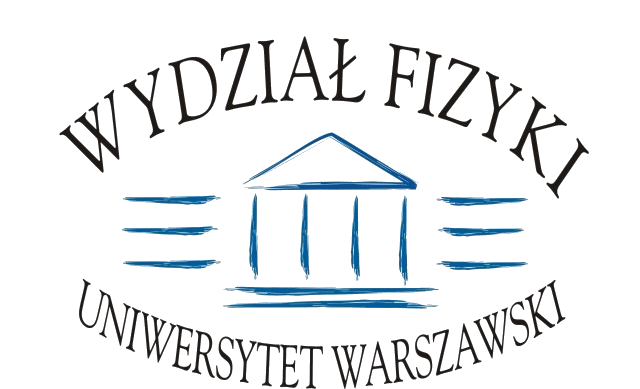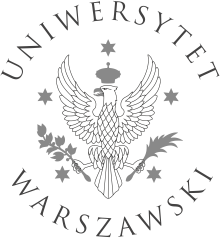Seminarium Teorii Oddziaływań Elementarnych
2006/2007 | 2007/2008 | 2008/2009 | 2009/2010 | 2010/2011 | 2011/2012 | 2012/2013 | 2013/2014 | 2014/2015 | 2015/2016 | 2016/2017
2016-11-21 (Poniedziałek)
Olga Czerwinska (IFT UW)
The impact of non-minimally coupled gravity on vacuum stability
We considered vacuum decay in the presence of a non-minimal coupling to gravity. We extended the usual thin-wall solution to include the non-minimal coupling and verified its validity by comparison with a full numerical study. We also investigated the implications of a large cosmological constant whose influence on the geometry booststhe tunneling rate. Our results show that the influence of the non-minimal coupling differs significantly between the cases of Minkowski and de Sitter backgrounds which I will describe in details in my talk.
2016-11-14 (Poniedziałek)
Enrico Sessolo (NCBJ)
Reconstructing WIMP properties through an interplay of signal measurements in direct detection, Fermi-LAT, and CTA searches for dark matter
I will examine the projected ability to reconstruct the mass, scattering,and annihilation cross section of dark matter in the new generation of large underground detectors in combination with diffuse gamma radiation from expected 15 years of data from Fermi-LAT observation of 46 local spiral dwarf galaxies and projected CTA sensitivity to a signal from the Galactic Center. I will consider several benchmark points inspired by rather general and well motivated extensions of the Standard model, spanning a wide range of WIMP mass, different annihilation final states, and large enough event rates to warrant detection in one or more experiments. Direct and indirect detection experiments can be used in complementarity to ameliorate the respective determinations, which in individual experiments can at best be rather poor. A remarkable improvement in WIMP reconstruction can be achieved by combining discovery data from Fermi-LAT and/or CTA, or by combining gamma-ray observatories with direct detection experiments.
2016-11-07 (Poniedziałek)
Kazuki Sakurai (IFT UW i Durham U.)
Search for Sphalerons: LHC vs. IceCube
In a recent paper, Tye and Wong (TW) have argued that sphaleron-induced transitions in high-energy interactions can be enhanced compared to previous calculations, based on a construction of a Bloch wave function in the periodic sphaleron potential and the corresponding pass band structure. In this talk, I present our work studying future prospects of observing sphaleron transitions at high energy hadron colliders and IceCube, based on TW results. I first discuss the production rate and possible signatures of the sphaleron-induced processes at high energy hadron colliders. We recast the early ATLAS Run-2 search for microscopic black holes to constrain the rate of sphaleron transitions at 13 TeV LHC. In the second half of the talk, I will discuss the possibility of observing sphaleron transitions induced by cosmogenic neutrinos at IceCube. I calculate the sphaleron event rate at IceCube and discuss the signature of such events. Finally I compare the performance of the sphaleron searches at the LHC and IceCube and find complementarity of these experiments.
2016-10-24 (Poniedziałek)
Wojciech Kotlarski (IFT UW and TU Dresden)
R-symmetric super-QCD at the LHC
As far as supersymmetry is concerned, the LHC data till now are usually interpreted within the Minimal Supersymmetric Standard Model (MSSM) or simplified versions thereof. Then the lower limit on squark masses coming from their direct pair production can be close to 2 TeV. However, those limits are not universal as they depend on other parameters of the MSSM. This is even more true if one goes to non-minimal SUSY models. In the talk I will argue that in the Minimal R-symmetric SUSY model (MRSSM) this limit could be significantly weaker.
The talk will be divided into two parts. First, the current experimental results will be interpreted in the context of the MRSSM, with a detailed analysis of the sgluon pair production. Second part will describe an ongoing effort to calculate full NLO SQCD corrections to the production of strongly interacting particles in the MRSSM
The talk will be divided into two parts. First, the current experimental results will be interpreted in the context of the MRSSM, with a detailed analysis of the sgluon pair production. Second part will describe an ongoing effort to calculate full NLO SQCD corrections to the production of strongly interacting particles in the MRSSM
2016-10-17 (Poniedziałek)
Ignatios Antoniadis (LPHTE Paris)
Aspects of string phenomenology in particle physics and scale hierarchies
2016-10-11 (Wtorek)
Matthew McCullough (CERN)
A clockwork theory (in IFT Conference room, 5.42)
2016-10-10 (Poniedziałek)
Matthew McCullough (CERN)
Natural heavy supersymmetry
On Tuesday 11th at 14:30 in the Conference room (5.42) Matthew will also deliver a lecture on "A Clockwork Theory"
Stron 3 z 3






